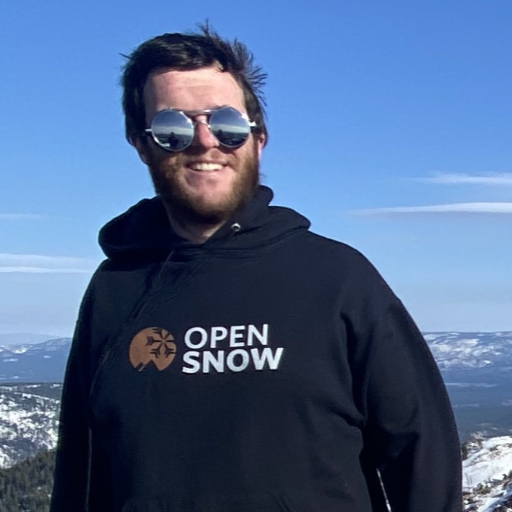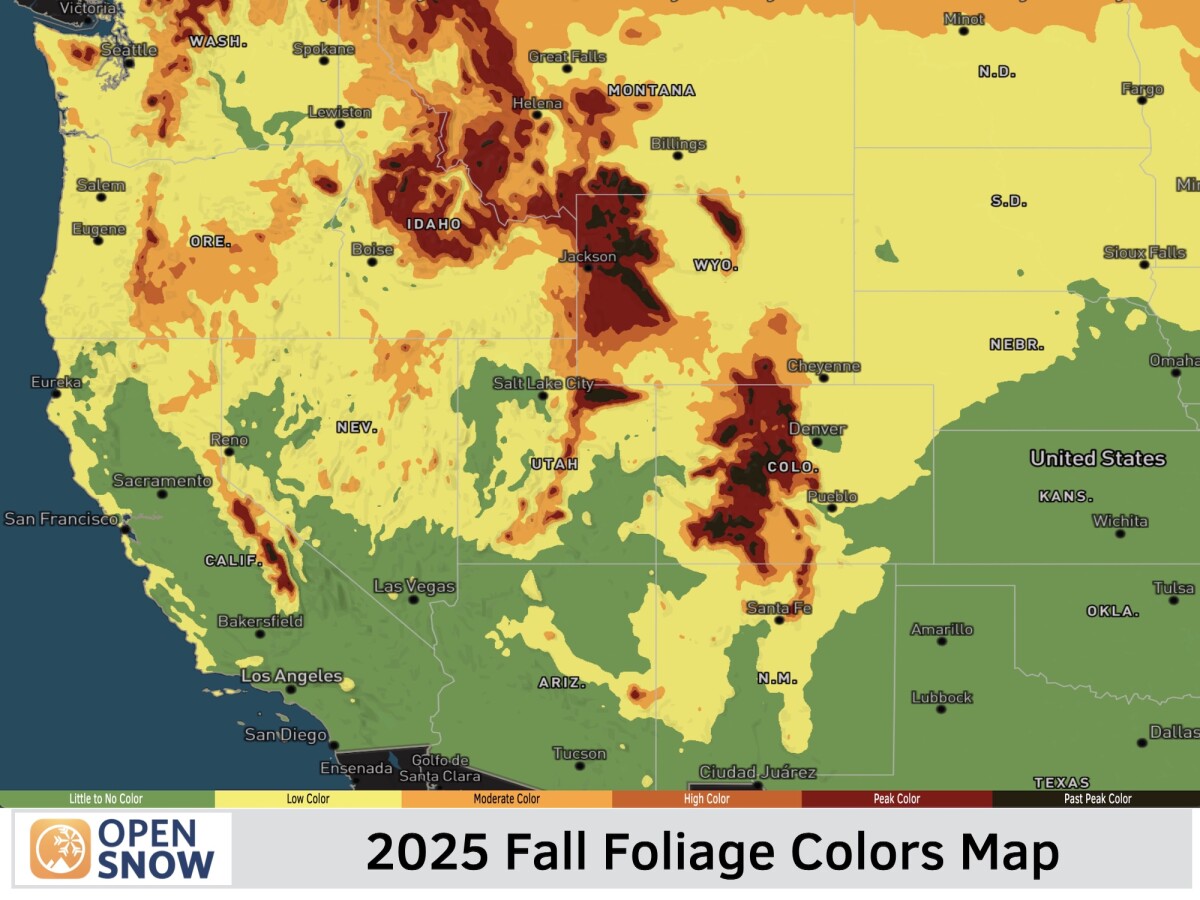News

By Mike Korotkin, Meteorologist Posted 9 months ago October 23, 2024
2024-2025 Mammoth Winter Forecast Preview
For the upcoming 2024-2025 winter season, La Niña conditions are growing and are favored to emerge during the late fall. Before getting into the details on what that could mean for the Mammoth Region, it's important to remember that any winter outlook will contain an inherent degree of uncertainty.
La Niña, Explained
The term La Niña refers to the large-scale ocean-atmosphere climate phenomenon linked to periodic cooling in sea-surface temperatures across the central and east-central equatorial Pacific.
La Niña represents the cool phase of the ENSO cycle and means that the ocean water temperatures are cooler than average.
La Niña Forecast for the Winter of 2024-2025
"ENSO Neutral" conditions (neither La Niña nor El Niño) have persisted through the summer of 2024 and long-range models have been projecting a higher-than-average chance of a La Niña taking over during the winter of 2024-2025.

Image: NOAA Forecast showing the probability of an El Niño, La Niña, and Neutral phase for each three-month period between the summer of 2024 and the spring of 2025. Red bars show the percent chance of an El Niño and the “DJF” label is for “December-January-February”.
The weekly Nino-3.4 region index (sea surface temperatures in the east-central Pacific) anomaly has dropped from 1.8°C during the 2023-2024 winter season to -0.1°C as of September 9, 2024.
Long-range models are projecting this to be a weak La Niña episode with sea surface temperatures ranging from -0.5 to -1.0ºC in the east-central Pacific.
A similar change from El Niño to a weak La Niña last occurred ahead of the 2016-2017 winter season.
With the help of my colleague Alan Smith, we have identified six winters since 1990 in which weak La Niña conditions were present:
- 2000-2001
- 2005-2006
- 2008-2009
- 2016-2017
- 2017-2018
- 2022-2023
We will use these winter seasons that featured a weak La Niña as “analog” years for this analysis.
Historical Weak La Niña Seasons @ Mammoth Mtn.
We're only looking at weak La Niña years between 1990 & the present day. There were other weak La Niña years that occurred prior to this and as you probably know Mammoth has snowfall records that date back more or less accurately to the winter of 1969-1970. I am going to do a slightly more in-depth dive into all of those years and combine other teleconnections to make what's hopefully a better prediction around the beginning of November.
For this analysis let's just focus on the years I've outlined above and compare then to the 30-year median for snowfall between 1990 and 2020. The 30-year median was 406 inches of snow for the season. This is about 30 inches greater than the average since records began in 1969.

The average for snowfall during the analog years was considerably higher at 526 inches! This is 129% of the 30-year average which constitutes a very good snow year.
Seasonal Snowfall During a Weak La Niña
- 1991-2020: 406" (30-year median)
- 2000-2001: 402" (99%)
- 2005-2006: 669" (165%)
- 2008-2009: 490" (121%)
- 2016-2017: 618" (152%)
- 2017-2018: 262" (65%)
- 2022-2023: 715" (176%)
1 out of the 6 La Niña years produced below-average snowfall, 1 produced average snowfall, and 4 produced well below-average snowfall. My criteria for average has always been anywhere between 75% of average to 115% of average. I know this isn't considered the norm, but statistically speaking when people say average they don't necessarily mean the exact number, especially for something as variable as snowfall. Needless to say in this analysis we have only 1 year that was nowhere near average and in the red!
The big years were very big years. And I also want to caveat that some of my numbers might be different than what's reported on the Mammoth site. I have gone back and forth and poured over many datasets. There were some really big years in the early 2000's that seem to have been dialed back, and while I can't say that with certainty my numbers are correct, I'm going to use them in this analysis. Either way, the snowfall was above average no matter which number you use.
For timing, when looking at the snowfall each month during those years and comparing that against the 30-year median snowfall for that month we get this:
- October: 11" (77%)
- November: 32" (97%)
- December: 74" (97%)
- January: 132" (165%)
- February: 106" (127%)
- March: 113" (167%)
- April: 48" (130%)
- May: 7" (65%)
What's interesting about the monthly analysis is that other than October and May we see average to naturally well above average every other month of the season. While I can't say anything for certain, it appears to me that given these analog years, we could be looking at a season that may have consistent snowfall in all of the months.
Remember that these numbers are quite high because these analog years pretty much all had average or above-average snowfall. The 2017-2018 year was clearly a big standout since it had well below-average snowfall. That year featured a complete Miracle March. If it wasn't for the 142 inches that fell that March we would have seen a dismal season rivaling the worst season on record.
2016-2017 Winter Season
As mentioned above, the Niño-3.4 region index anomaly as of September 9, 2024, is down to -0.1°C, which is similar to where it was ahead of a La Niña event during the summer of 2016.
So, is 2016-2017 the best analog winter to compare to? I'm not certain yet, and that's because I haven't done a truly deep dive like I mentioned I would earlier in this post. When I do that I'll let you know. But, if this winter is shaping up to be similar to 16-17 then we're in for a wild ride and hopefully a very snowy winter.
So, given everything I've said... History seems to tell us that based on the 6 years that had weak La Niña's in the last 30+ years we should see at least an average to an above-average winter.
Remember though, we've seen La Niña's that didn't yield average or above, so there's never a guarantee.
Having said all of this, for skiers and snowboarders, keep in mind that when it comes to finding the best conditions, it’s all about timing. To have the best chance of enjoying the deepest powder, our recommendation is to dial in your plans 7-10 days in advance.
Sometimes, longer-range forecasts can identify possible storms 1-2 weeks (or longer) in advance, but often, forecast confidence in the details of each storm only begins to increase when the system is about one week away or closer.
Upgrade to OpenSnow All-Access for 10-day snow forecasts, expert local analysis, and custom snow alerts to help you find the deepest snow and the best ski conditions all winter long.

Every OpenSnow All-Access subscription is also good for 365 days.
- 10-Day Snow Forecasts
- Expert Local Forecasters
- Custom Snow Alerts
- 3D Snowfall Maps
- Snow Forecast & Report Widgets
- 10-Day Hourly Forecasts
- Current & Forecast Radar
- Active Fire & Smoke Maps
- Lightning Risk Forecasts
- Offline Satellite & Terrain Maps
"The OpenSnow app is an absolute must-have for anyone who loves winter sports or simply wants to stay informed about snow conditions. The interface is user-friendly, making it easy to access detailed weather forecasts, snow reports, and mountain updates. The accuracy of the predictions is impressive, giving me confidence in planning my ski trips." – August 2024 Review
Questions? Send an email to [email protected] and we'll respond within 24 hours. You can also visit our Support Center to view frequently asked questions and feature guides.
Mike
About The Author




